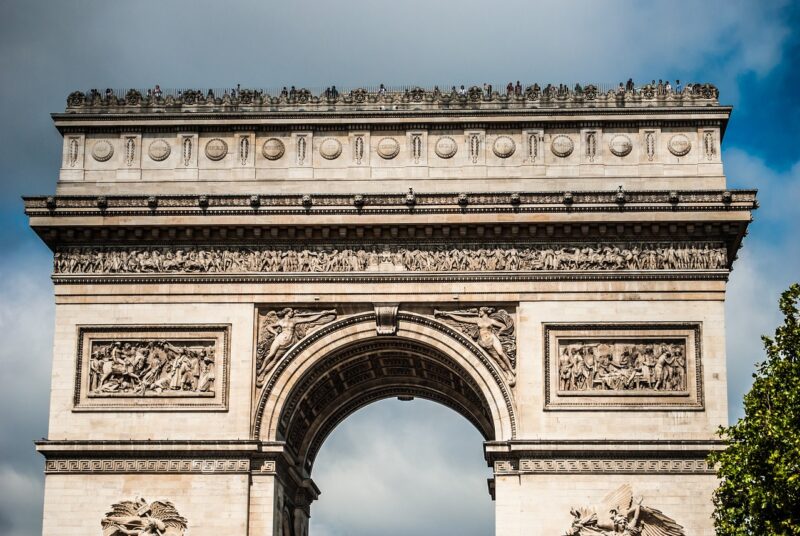When you think of monumental architecture that has stood the test of time, the Arch of Triumph inevitably comes to mind. These grand structures, built to commemorate significant events or victories, are not just architectural marvels but also symbols of a nation’s pride and history. Their imposing presence and intricate designs draw millions of tourists every year, and they stand as testaments to human ingenuity and resilience.
Table of Contents
- Historical Background
- Famous Arches of Triumph Around the World
- The Architecture of the Arch of Triumph
- The Construction Process
- Cultural and Political Significance
- Modern Interpretations and Replications
- Tourism and the Arch of Triumph
- Preservation and Conservation Efforts
- The Future of the Arch of Triumph
- Personal Reflections
- Conclusion
- FAQs
Historical Background
The origins of triumphal arches trace back to ancient Rome, where they were erected to celebrate victorious generals and monumental victories. These structures were designed to be elaborate and imposing, adorned with detailed carvings and inscriptions that depicted the achievements they commemorated. Over time, the concept of the triumphal arch spread beyond Rome, influencing architectural styles across the globe.
Famous Arches of Triumph Around the World
Arc de Triomphe, Paris
One of the most iconic triumphal arches is the Arc de Triomphe in Paris. Commissioned by Napoleon Bonaparte in 1806, it was completed in 1836. This magnificent structure stands at the western end of the Champs-Élysées and honors those who fought and died for France during the French Revolutionary and Napoleonic Wars. The names of all French victories and generals are inscribed on its inner and outer surfaces.
Arch of Constantine, Rome
The Arch of Constantine is another remarkable example. Erected in 315 AD to commemorate Constantine I’s victory over Maxentius at the Battle of Milvian Bridge, this arch is notable for its reuse of materials from earlier monuments, which was a common practice in ancient Rome. Its intricate reliefs and statues celebrate Constantine’s victory and the peace that followed.
Arc de Triomf, Barcelona
In Spain, the Arc de Triomf in Barcelona stands out for its unique reddish brick construction and Moorish-inspired design. Built as the main access gate for the 1888 Barcelona World Fair, it serves not only as a triumphal arch but also as a symbol of the city’s cultural identity and artistic heritage.
The Architecture of the Arch of Triumph
Triumphal arches are masterpieces of design and engineering. They typically feature one or more arched passageways, elaborately decorated with relief sculptures, inscriptions, and statues. These elements are not merely decorative; they convey stories of heroism, historical events, and the values of the society that built them. The choice of materials, often marble or stone, ensures the arch’s durability and grandeur.
The Construction Process
Building an Arch of Triumph involves meticulous planning and skilled craftsmanship. The process begins with a detailed design, often inspired by previous triumphal arches or local cultural elements. The construction requires precise masonry techniques to ensure the stability of the arch, which must withstand significant weight and environmental conditions. Historical records reveal that the construction of such arches often faced logistical challenges, from sourcing materials to assembling the intricate sculptures and reliefs.
Cultural and Political Significance
Triumphal arches are more than just architectural structures; they are powerful symbols of cultural and political identity. They commemorate victories, honor leaders, and celebrate national achievements. In many cultures, they represent resilience and unity, serving as focal points for national pride and historical reflection.
Modern Interpretations and Replications
The influence of triumphal arches extends into modern architecture. Many contemporary structures draw inspiration from their grandeur and symbolic design. Replicas and adaptations of famous triumphal arches can be found worldwide, each reflecting the local culture and history while paying homage to the original designs.
Tourism and the Arch of Triumph
Today, triumphal arches are major tourist attractions, drawing visitors from around the globe. They contribute significantly to the local economy, boosting tourism-related businesses such as hotels, restaurants, and souvenir shops. Tourists flock to these sites not only to admire their beauty but also to learn about the history they represent.
Preservation and Conservation Efforts
Preserving these historical monuments is crucial for maintaining our cultural heritage. Conservation efforts involve regular maintenance, restoration of damaged elements, and protection from environmental and human-induced threats. Organizations worldwide are dedicated to ensuring that these arches remain intact for future generations to appreciate and learn from.
The Future of the Arch of Triumph
Looking ahead, the future of triumphal arches will likely involve a blend of preservation and innovation. As cities grow and modernize, integrating these ancient structures into contemporary urban landscapes presents both challenges and opportunities. Ensuring that these monuments remain relevant and accessible while preserving their historical integrity will be key.
Personal Reflections
On a personal note, visiting an Arch of Triumph can be a profound experience. It’s not just about seeing a beautiful structure but also about connecting with history and the stories of those who came before us. Whether standing under the Arc de Triomphe in Paris or the Arch of Constantine in Rome, one can’t help but feel a sense of awe and respect for the craftsmanship and significance of these monuments.
Conclusion
The Arch of Triumph is more than just a piece of architecture; it is a symbol of human achievement, resilience, and artistry. These structures, with their intricate designs and historical significance, continue to inspire and captivate people around the world. As we preserve these monuments and integrate their legacy into our modern lives, we ensure that future generations can appreciate and learn from these grand testaments to our shared history.
FAQs
Triumphal arches are important because they commemorate significant historical events and victories, honor leaders, and serve as enduring symbols of cultural and national identity. They also represent the architectural and artistic achievements of the societies that built them.
What is the purpose of an Arch of Triumph?
An Arch of Triumph is built to commemorate significant victories, honor leaders, and celebrate national achievements. It serves as a symbol of cultural and political identity.
How many triumphal arches are there worldwide?
There are numerous triumphal arches around the world, with famous examples in cities like Paris, Rome, and Barcelona. Many countries have their own versions, each reflecting their unique history and culture.
Can you visit the Arc de Triomphe in Paris?
Yes, the Arc de Triomphe is open to visitors. You can climb to the top for a panoramic view of Paris and explore the museum inside that details its history and construction.
What materials were commonly used to build these arches?
Triumphal arches were commonly built using durable materials like marble and stone to ensure their longevity and grandeur. These materials also allowed for intricate carvings and detailed sculptures.
Why are triumphal arches important in history?









